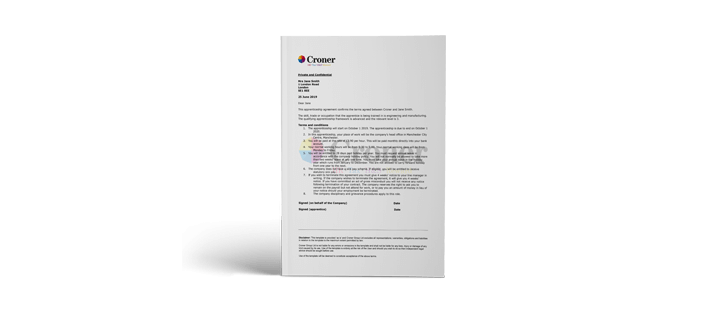At Croner, we’re experts when it comes to the recruitment process and everything that comes after. As an employer, we know that there’s a lot of legal responsibilities for you to get your head around. We offer top-quality support, whenever you need it, to guide you through the recruitment process. Call our knowledgeable team now on 0808 501 6651 for FREE and experienced HR support.
All Content

BLOG
Recruitment in hospitality: A checklist
Recruiting for staff to fill vacancies in the hospitality sector can be particularly challenging. Th
Read more
BLOG
Employee Onboarding Processes
The growth of any business is reliant on talent acquisition. Once you’ve mastered the HR recruitment
Read more
BLOG
Agency Worker Guide
Employers sometimes need to hire temporary agency workers to help in certain areas of the business,
Read more
BLOG
What is Volunteer Management?
Put simply, volunteer management is the process an employer would take when they are recruiting and
Read more
BLOG
Seasonal Labor Management
In the UK, seasonal workers play a vital role in agriculture, handling tasks from crop harvesting to
Read more
FREE DOWNLOAD
Apprenticeships Guide
Read more
BLOG
The Interview Process
The interview process is understandably a nerve-wracking experience for interviewees and interviewer
Read more
BLOG
Overcoming the Hiring Crisis
Any business looking to grow in size will need to rely on talent acquisition. When you’ve perfected
Read more
BLOG
CV Fraud can be Prosecuted – When Should it be?
In August 2022, a chief executive was ordered to pay back part of his salary after falsifying his Ph
Read more
BLOG
How to Attract the Right Talent and Meet Their Expectations
In the current employment market, it can be difficult to get the people you need. Many businesses fe
Read more
BLOG
Hiring Regret – Your Options
Recent research shows that business regret almost half of the new hires they make. If you’ve found
Read more
BLOG
Talent Crisis – Is Reskilling the Way Forward?
With staff coming and going in many industries across the UK, lots of businesses are focusing on rec
Read more
BLOG
Candidates - Choosing Correctly During the Great Resignation
Businesses across the UK are facing one of the biggest staffing shortages in living memory. When loc
Read more
BLOG
Post COVID Recruitment: How to Find Candidates
Recruiting new talent is a complex process. Throw in a global pandemic and a recovering economy, and
Read more
BLOG
Traineeship Scheme - How To Use
What is a traineeship? Traineeships, introduced in 2013, offer education, training, and work experi
Read more
BLOG
Kickstart Scheme
The Kickstart scheme was announced by the Chancellor, Rishi Sunak, in July 2020. The scheme was unve
Read more
BLOG
Dealing with an Increase in Job Applicants
Coronavirus and redundancies continue to plague the UK. As a result, the number of people looking fo
Read more
BLOG
7 Steps for EDI Recruitment in Practice
The following article was originally published on the RIBA website. A huge thanks to Helen Castle, P
Read more
BLOG
Are You About to Hire Volunteers for the First Time?
As we enter the summer months, you may consider taking on a few volunteers in order to provide addit
Read more
BLOG
Do I Need to Pay My Interns and Work Experience Staff?
Interns. They’re eager, hard-working, and have flexibility over the summer to take on your part-time
Read more
BLOG
Top Five Things to Remember When Recruiting
Although finding the appropriate person for a role is challenging, getting things right at the recru
Read more


